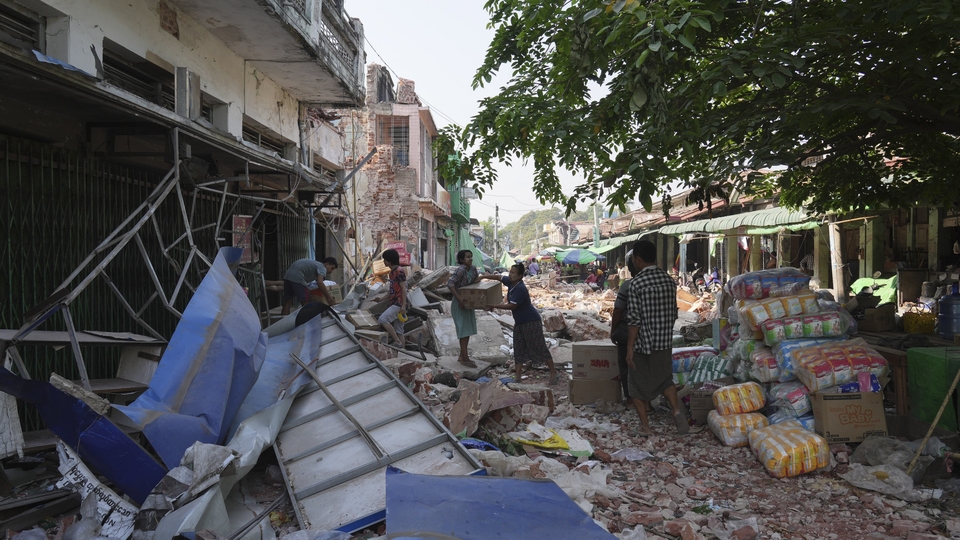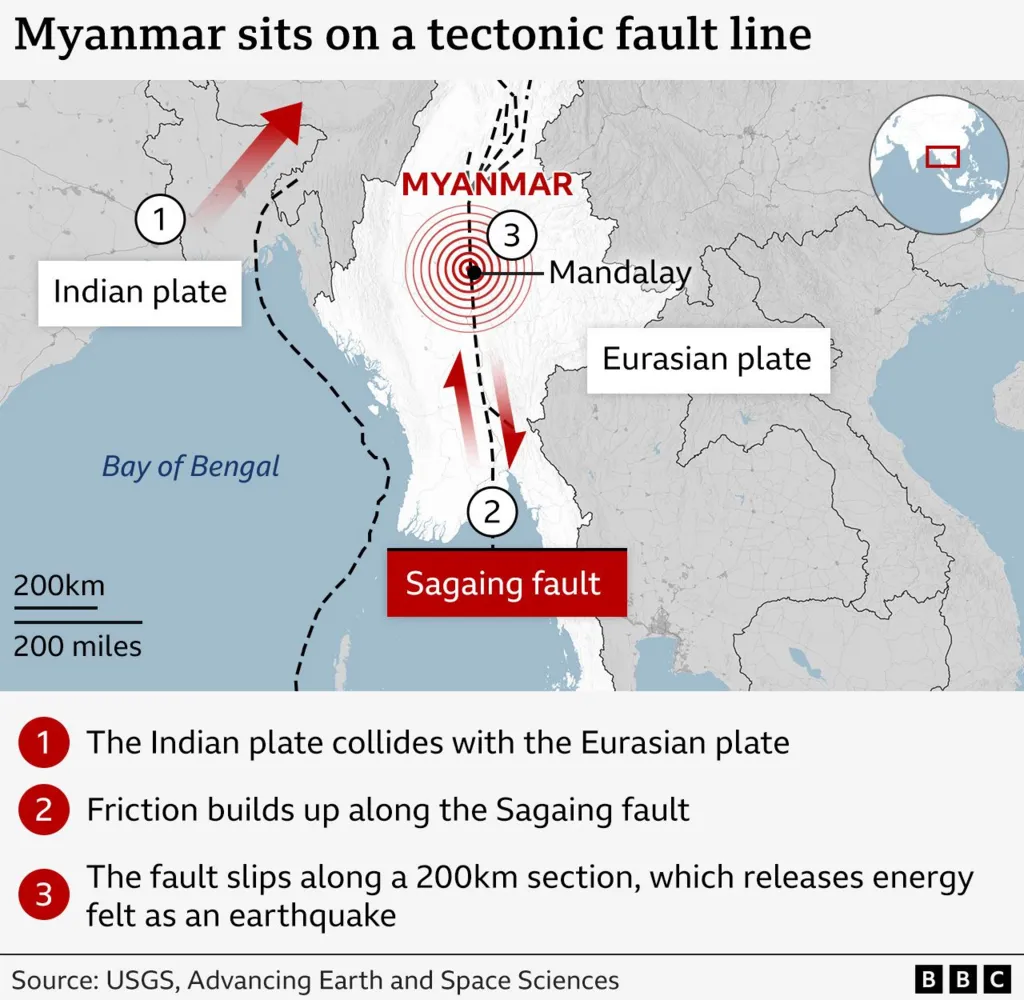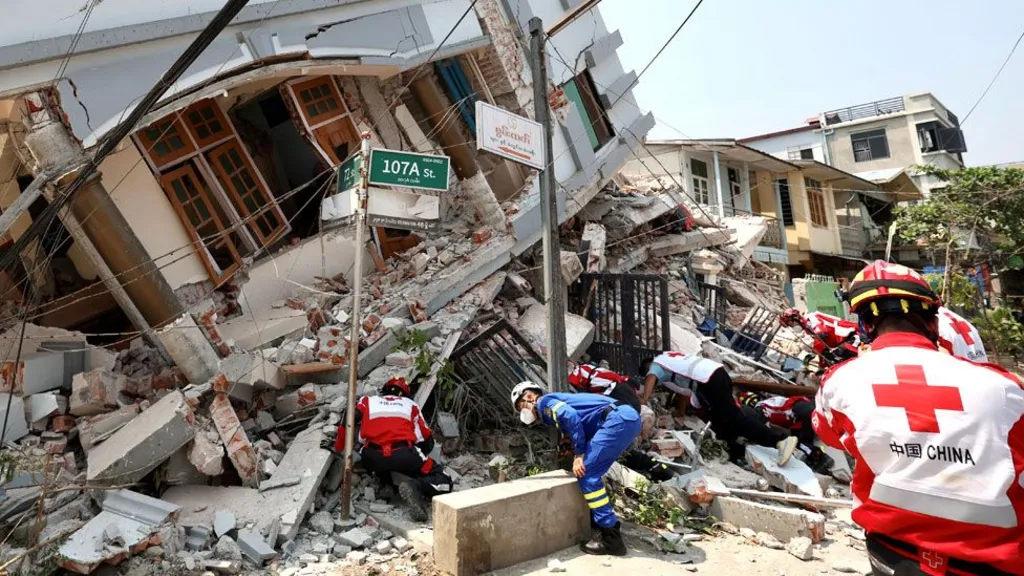2025 Myanmar Earthquake: Causes Behind the Bangkok Skyscraper Collapse Explained

Introduction
A powerful 7.7-magnitude earthquake struck Myanmar on [insert date], claiming over 2,000 lives and causing widespread destruction. Surprisingly, the tremors toppled an unfinished skyscraper in Bangkok, Thailand—over 1,000 km away. This article explores the science behind the earthquake, its far-reaching impact, and why Bangkok’s high-rise collapsed despite modern engineering.
A major earthquake in Myanmar on Friday has caused more than 2,000 deaths and led to the collapse of numerous structures.
Even though the south-east Asian nation is a high risk region for earthquakes, neighbouring Thailand and China – which were also affected by the quake – are not.
The Thai capital, Bangkok, sits more than 1,000km (621 miles) from the epicentre of Friday’s earthquake – and yet an unfinished high-rise building in the city was felled by it.
Here we will explain what caused this earthquake, and how it was able to have such a powerful effect so far away.
What Caused the Myanmar Earthquake?
Myanmar sits at the convergence of four tectonic plates: the Eurasian, Indian, Sunda, and Burma microplates. These plates constantly shift, creating seismic hotspots.
- The Role of the Sagaing Fault:
The earthquake originated along Myanmar’s 1,200-km-long Sagaing Fault, where a strike-slip motion occurred—two tectonic blocks slid horizontally past each other. - Shallow Depth Amplified Destruction:
Striking just 10 km below the surface, the quake’s shallow depth intensified ground shaking, releasing energy equivalent to 20 Hiroshima atomic bombs.
Why Was the Earthquake Felt 1,000 km Away in Bangkok?
Three factors explain the tremors’ unprecedented reach:

- Super-Shear Rupture Speed:
The fault ruptured at 5 km/second—faster than seismic waves travel—creating a “supersonic” shockwave that channeled energy southward toward Bangkok. - Bangkok’s Soft Soil Amplification:
The city’s clay-rich soil slows and magnifies seismic waves, worsening ground shaking. - Direct Path of Energy:
The Sagaing Fault’s alignment funneled vibrations efficiently across the region.
Why Did Only One Skyscraper Collapse in Bangkok?
While most buildings swayed but held, the unfinished Auditor-General’s Office collapsed due to:
- Outdated Construction Practices:
Built using flat-slab design (no beams between floors), the structure lacked resilience against lateral forces. Thailand’s earthquake-resistant codes, introduced in 2009, may not have been fully enforced. - Soil Vulnerability:
Soft soil beneath Bangkok amplified tremors by 3–4 times. - Possible Material Flaws:
Investigations are ongoing into concrete quality and structural irregularities.
Myanmar’s High Risk: Poor Infrastructure and Liquefaction
Nearer the epicenter, Myanmar faced catastrophic damage due to:

- Weak Building Standards:
Political instability and poverty have hindered enforcement of earthquake-resistant codes. - Liquefaction Danger:
In Mandalay, water-logged river plains turned to liquid under shaking, destabilizing foundations.
Could Aftershocks Worsen the Damage?
Aftershocks remain a threat, especially to already weakened structures. While most are smaller, they can trigger landslides or further collapses in vulnerable areas like floodplains.
Key Takeaways
- Myanmar’s quake resulted from rapid slippage along the Sagaing Fault.
- Bangkok’s soft soil and the quake’s “supersonic” rupture led to long-distance destruction.
- Enforcing modern building codes is critical for earthquake-prone regions.
FAQ
Q: Why was the Myanmar earthquake so strong?
A: Its shallow depth and strike-slip motion along a massive fault generated immense energy.
Q: Is Bangkok at risk for future earthquakes?
A: Yes—proximity to active faults and soft soil make it susceptible, even from distant quakes.
Q: How can buildings withstand earthquakes?
A: Reinforced designs with beams, deep foundations, and flexible materials reduce collapse risks.
